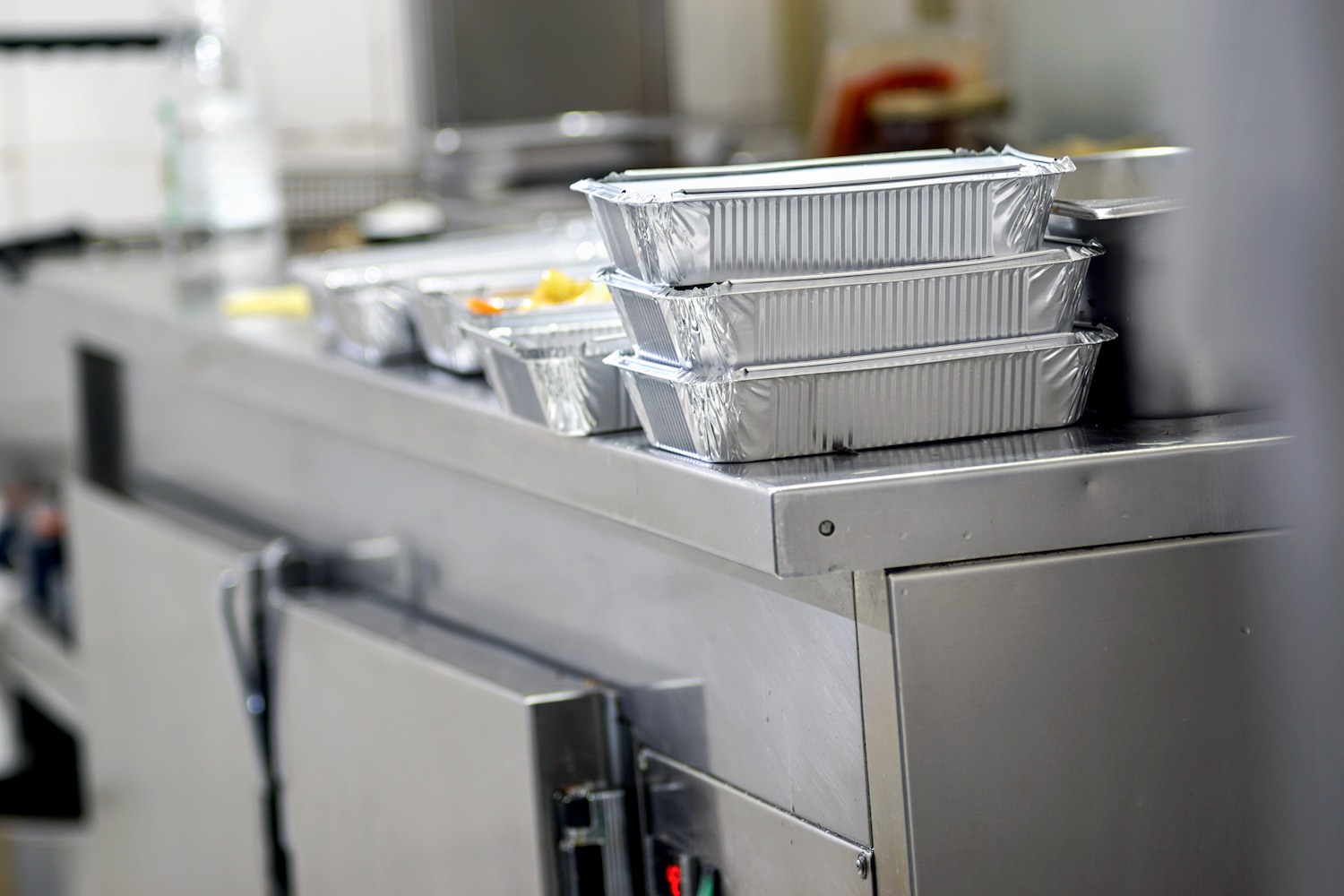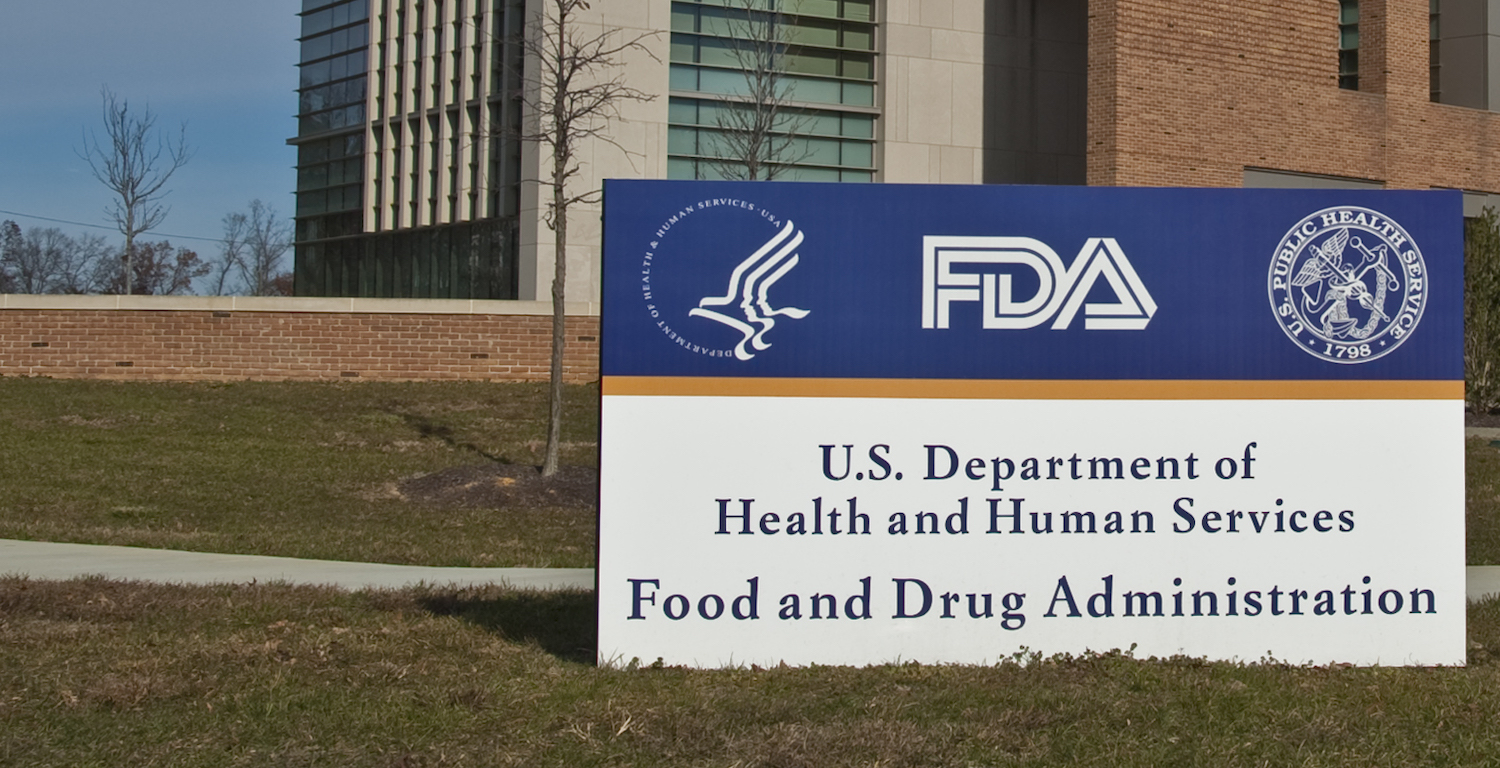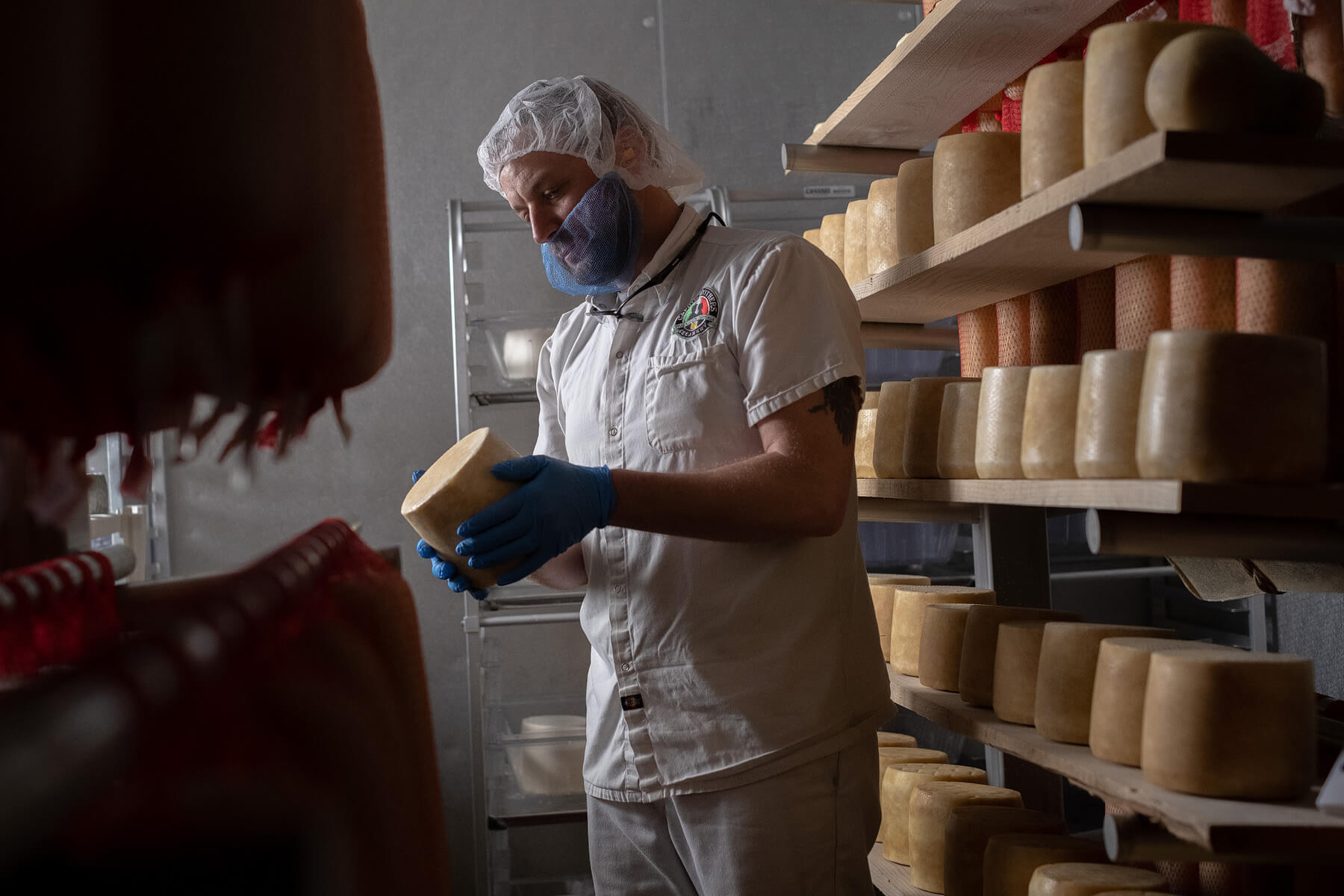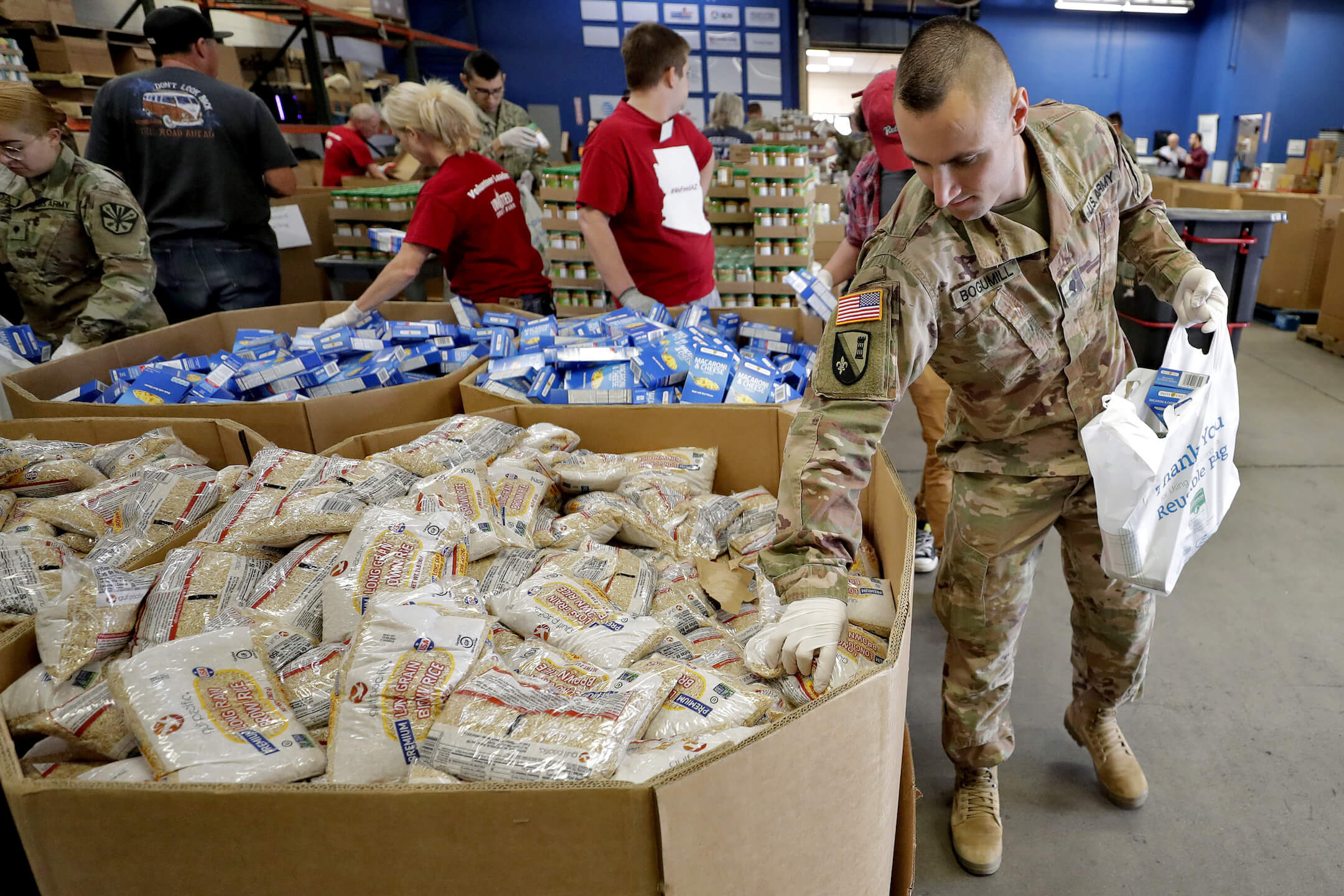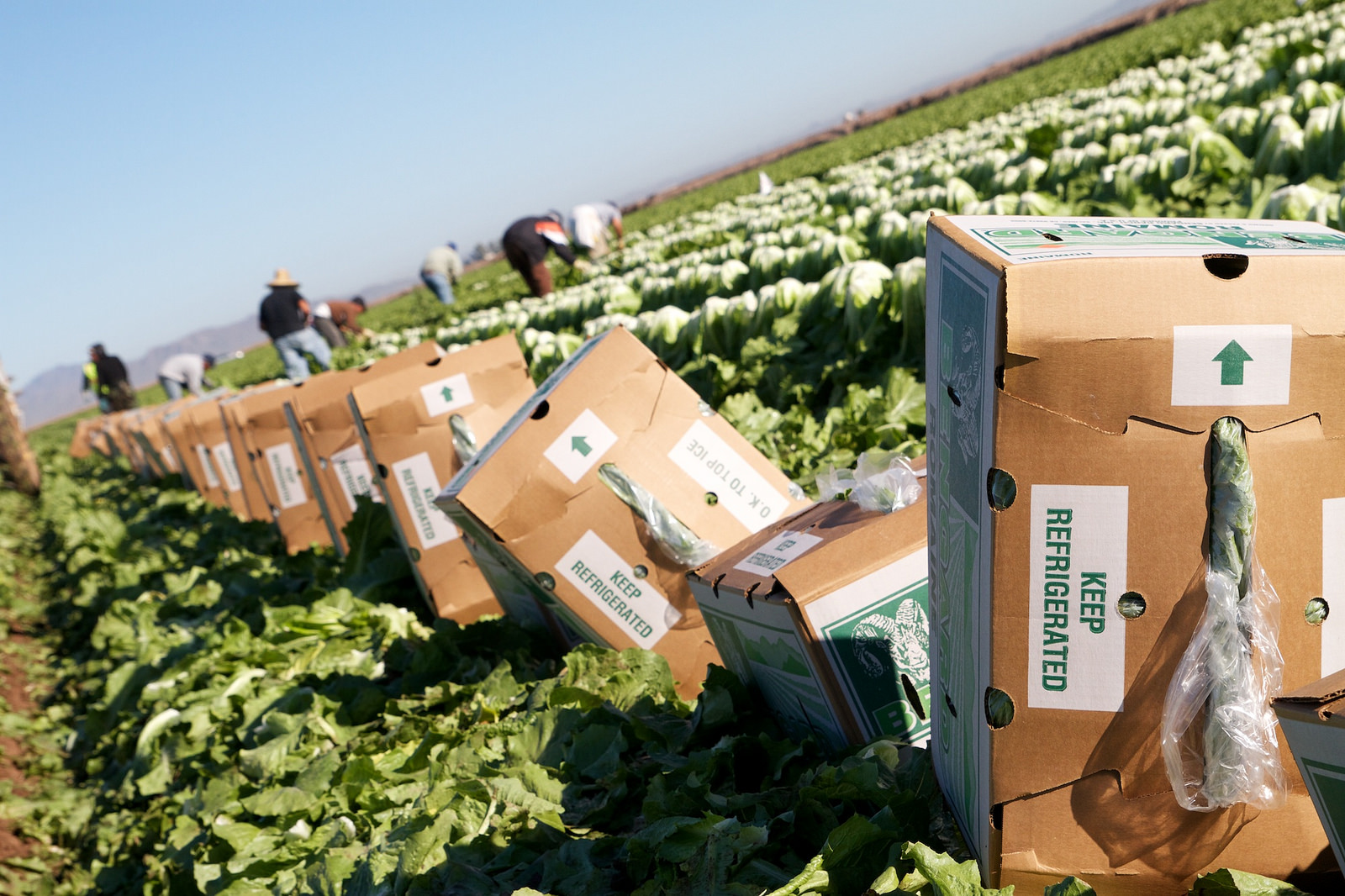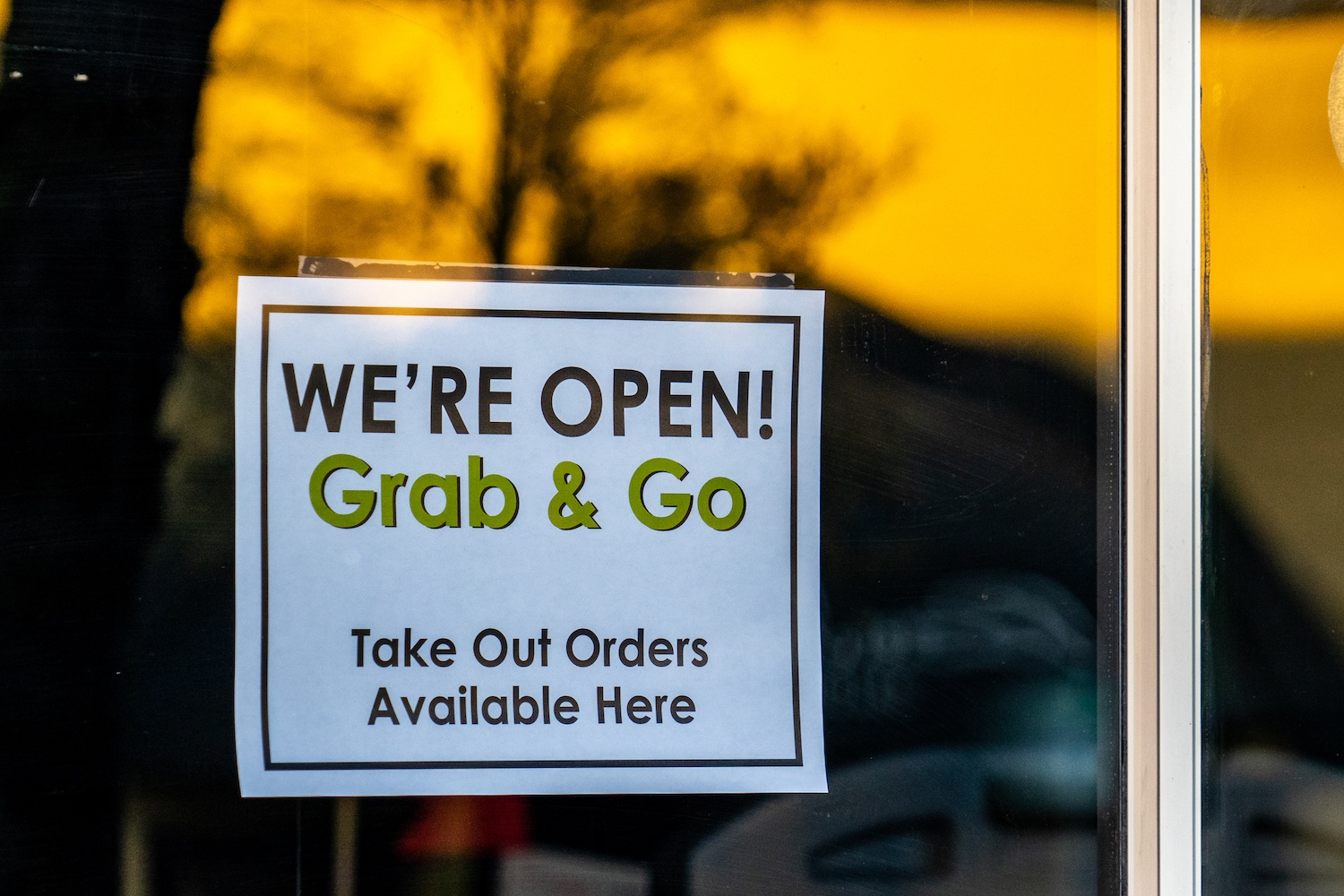
Flickr/Cindy Shebley
For restaurants that have become de facto grocery stores during the pandemic, new guidance eases the switch.
Two weeks ago, restaurateur Dan Simons laid off 1,100 employees across his seven restaurants in the Washington, D.C. area. This week, he and a skeleton crew of 20 will relaunch one dining room as a contactless grocery store. They’re gearing up to sell pre-made, refrigerated meals, in both individual and family-size portions, as well as produce and household goods like boxes of tissue, toilet paper, disinfectant wipes, and hand sanitizer brewed in the company’s own distillery. All that is in addition to offering takeout and delivery from the restaurant’s to-go menu.
“We lost basically 97 percent of our people and 97 percent of our revenue,” Simons said. “Now we’re adding it back in bits.”
The rapid spread of Covid-19—and resultant social distancing measures—has forced most restaurants in America to shut their doors, at least for the time being. Now, a burgeoning group of them, determined to keep the lights on, are repositioning themselves as quasi-grocery stores.
“By allowing restaurants to offer grocery services, the supply chain will continue to run, the citizens of our country will have a big box store alternative, and equally important, our restaurants might just survive.”
Last week, the Food and Drug Administration (FDA) issued guidance that would make operating these restaurants-turned-retailers much easier: The agency announced it would waive nutrition facts labeling requirements for all packaged foods they sell on site.
“To facilitate the further distribution of food during the Covid-19 pandemic, FDA does not intend to object to the sale of packaged food (both perishable and non-perishable food) that lacks a nutrition facts label by restaurants,” read an agency statement issued last Thursday.
Restaurant owners welcomed the decision with relief. In effect, it gives them the green light to sell food under the unprecedented circumstances posed by Covid-19, without worrying about potential FDA enforcement of labeling requirements, which can range in nature from product seizures to criminal prosecution.
FDA regulation requires packaged food to bear nutrition facts labeling, but exempts most restaurants from this requirement. However, restaurants that are adapting to the Covid-19 crisis by offering grocery items now occupy a gray area when it comes to regulation. They are no longer simply selling pre-made versions of popular menu items, they’re selling produce, deli meats, and dairy products—which, under normal circumstances, they’d be using to prepare their menu items. If they wanted to do that under normal circumstances, they’d be subject to retailer regulations.
“The nutrition facts label is one of the most effective public health interventions over the last 30 years.”
But these, quite obviously, are not normal circumstances. “FDA’s guidelines are there to protect the citizens of our communities; I believe those guidelines are extremely important,” said Geoffrey Bezuidenhout, owner of Picnikins, a restaurant and caterer in San Antonio, Texas that now offers grocery items on its menu. Customers can order prepared meals, wine, toilet paper, and a wide range of produce and deli items for pick-up or delivery. But Bezuidenhout thinks that local food safety standards for restaurants are strong enough to maintain both regulatory and eater confidence. (Restaurants are subject to state-based food regulations, which are modeled after FDA’s Food Code, which outlines best practices.) He said FDA’s flexibility will help him, and others in the business, endure the pandemic.
“By allowing restaurants to offer grocery services, the supply chain will continue to run, the citizens of our country will have a big box store alternative, and equally important, our restaurants might just survive,” he said.
The nutrition facts label—which outlines caloric, sodium, fat, and sugar content among other details—that you find on packaged foods dates back to the early 1990’s, when Congress first gave FDA the authority to mandate labeling. In 1993, the agency finalized requirements that give us the ubiquitous nutrition facts panels we have today, though restaurant items were exempt from bearing them. In 2010, the Affordable Care Act required restaurant chains with 20 or more locations to provide nutritional information to eaters for standard menu items, as well.
“We have standardized recipes, but they’re not as straightforward as supermarket recipes.”
“The nutrition facts label is one of the most effective public health interventions over the last 30 years,” said Diana Winters, assistant director of the Resnick Center for Food Law and Policy at the University of California, Los Angeles. “People actually look at the nutrition facts label, they make decisions based on it.”
But in these “exceptional times,” Winters believes that FDA made the right move, one that she hopes will allow restaurants to continue operating and that she believes will not negatively impact eater nutrition long-term.
“It’s important that people eat and restaurants sell to keep the economy going and to keep people fed,” she said. “This is a really good example of an agency adapting to circumstances and being flexible in a way that people often say the federal government can’t be.”
“The more creative the restaurant, the more difficult it’s going to be to get really accurate nutritional information.”
FDA’s guidance still requires restaurants to note ingredients and allergens in every product, which Winters deems “the most important” of eater concerns right now.
Unlike food manufactured en masse, restaurant meals can be complex or fluid in a way that makes details, like dietary fiber content, hard to capture.
“We have standardized recipes, but they’re not as straightforward as supermarket recipes,” said Cathy Pavlos, chef and owner of Provenance, an Italian restaurant in California. “The more creative the restaurant, the more difficult it’s going to be to get really accurate nutritional information.”
“I think it’s important. I just don’t think it is vital.”
In addition to prepared meals, Provenance is also now selling meal kits. Pavlos told me that she’s more focused on making sure customers can properly cook their food than anything else: “Food held at an incorrect temperature can do far more damage than somebody eating a little extra sodium that day.”
Simons, the D.C.-based restaurateur concurs.
“It’s just not possible to move so rapidly to get nutritional value on every label,” he said. He estimates that his restaurant group made the restaurant-to-grocery shift in a matter of weeks. “Anybody who’s doing this pivot just has to be mindful of food safety. And as long as you’re pulling all your decisions through the decision making filter of food safety … nutritional value [labeling] can come a bit later. I think it’s important. I just don’t think it is vital.”
Like others in the same boat, Simons considers the restaurant-to-retail pivot a long-term investment, as Covid-19 uproots modern life and shows no signs of abating: “That way, no matter how long this lasts, and no matter what the new ‘normal’ is, we’re in a position to continue to serve our community and keep our people employed,” he said. “That’s our plan.”

